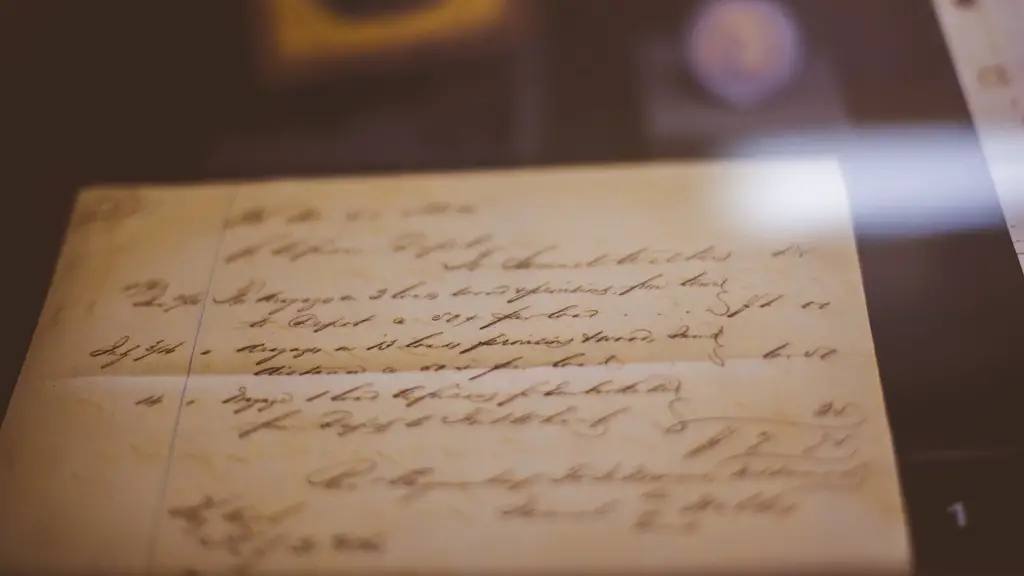What is a Line Break in Poetry
A line break in poetry separates a line of text into two or more distinct parts. A line break in poetry can be defined as a pause, interruption, or new thought that is introduced with a special punctuation mark such as a comma, double hyphen, or dash. It can also be a change in word structure or length as well as a shift in thought or tone. Poets often use line breaks to create emphasis, add structure, or draw attention to a particular line in a poem.
Line breaks are often used in the traditional poetic forms of self-pity, the villanelle, sestina, and sonnets, as well as in contemporary free verse poetry. Line breaks can be used to create patterns, contrast, or suspense. For example, a poet could use line breaks to draw attention to the end of a sentence and create an allusion to the beginning of the next sentence, thus creating tension and mystery. By using line breaks, a poet can also change the pace or flow of a poem, making it more interesting and dynamic.
Line breaks can also be used to create specific themes in a poem. A poet might use line breaks to emphasize certain words or images, to suggest a thematic link, to draw similarities between two different ideas, or to convey a message. The placement of the line break can be used to signify a change in subject or tone.
When a line break is used in poetry, it should be easy to recognize and understand. The poet should be able to accomplish this by adding emphasis to the end of each line, not to the length of the line itself. Line breaks can be used to help create a mood, enhance the meaning of a poem, and also to provide structure to a poem.
The Different Types of Line Breaks in Poetry
A line break in poetry can either be end-stopped or enjambed. An end-stopped line break is one where the sentence, and sometimes the thought, is completed by the last word of the line. This type of line break allows for a break between the two lines of text, but still preserves the poetic rhythm of the poem.
An enjambed line break is where the sentence or thought carries on past the end of the line without any punctuation. This type of line break is used to create suspense and create a sense of flow, rather than pause. It can also be used to insert extra syllables at the end of a line so as to maintain the rhythm of the poem.
Line Breaks & Poetic Form
Line breaks are commonly used in traditional and classical forms of poetry, such as the villanelle, sonnet, sestina, and haiku. In these forms, line breaks are often used to create symmetrical patterns and structure, as well as to enhance the meaning of the poem. Line breaks can also be used to draw attention to certain key elements of the poem, such as a recurring line or phrase.
Advantages of Line Breaks in Poetry
One of the main advantages of using line breaks in poetry is that they allow the poet to draw attention to particular words or phrases. By using line breaks, a poet can emphasize certain key words or images in a poem. This can help create a certain atmosphere or mood in a poem, draw attention to an important message, or make a strong point. Line breaks are also a good way to create structure in a poem and separate different ideas or themes.
Line breaks can also be used to create suspense or tension in a poem. By using line breaks to break the rhythm of the poem, a poet can draw the reader in and create a sense of anticipation for what will come next. This can make a poem more exciting and engaging for the reader.
Disadvantages of Line Breaks in Poetry
One of the disadvantages of using line breaks in poetry is that some readers may find them distracting, as they can take away from the flow of the poem. It can also be difficult to know when and where to place line breaks in a poem in order to emphasize certain words or ideas. It can be even more challenging to effectively use line breaks to create tension and suspense.
Conclusion
Line breaks in poetry can add emphasis, structure, and suspense to a poem. It is important to note that the use of line breaks should be used in moderation, as it can become distracting for the reader if overused. Poets should be mindful of when and where to place line breaks in order to maximize their effectiveness.

